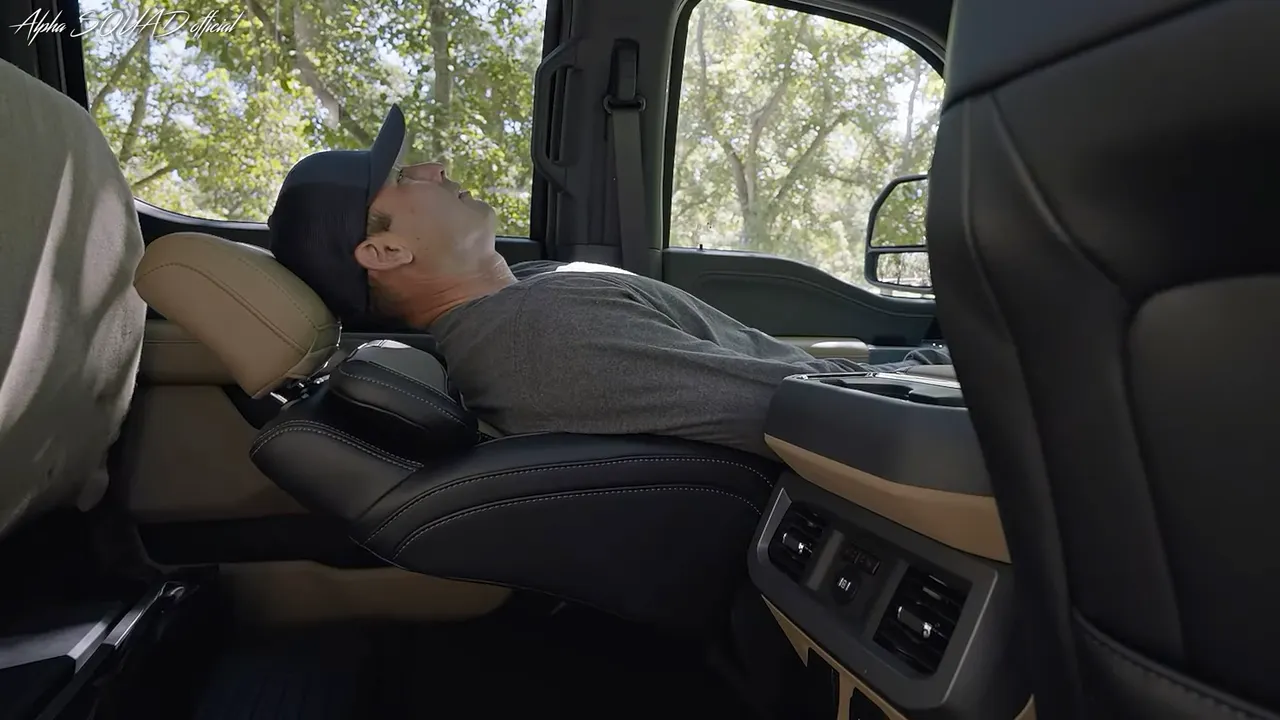Can You Die From Sitting in a Running Car Outside? (A Honest Review)
Sitting in a running car outside may seem like a harmless activity, especially during colder months when we seek warmth and comfort. However, it is crucial to be aware of the potential dangers associated with this seemingly innocuous act.
While vehicles provide a convenient and efficient mode of transportation, certain risks arise when they are operated while stationary, especially in enclosed spaces.
Carbon monoxide (CO) poisoning poses a significant threat when sitting in a running car without proper ventilation. Carbon monoxide is an odorless and colorless gas produced by the combustion of gasoline, and it can accumulate to toxic levels in enclosed areas. Exposure to high levels of carbon monoxide can lead to serious health consequences, including death.
In this article, we will delve into the risks and potential consequences of sitting in a running car outside, highlighting the importance of understanding the dangers associated with carbon monoxide poisoning.
By increasing our awareness of these risks, we can make informed decisions to prioritize our safety and the well-being of those around us.
How Does Sitting in a Running Car Cause Death
Sitting in a running car can potentially lead to death due to the risk of carbon monoxide poisoning. Carbon monoxide (CO) is a colorless, odorless, and tasteless gas that is produced when fuels, such as gasoline, are burned. When a car engine is running, it emits exhaust gases that contain carbon monoxide.
The danger arises when these exhaust gases accumulate in an enclosed space, such as a closed garage or a vehicle with its windows and doors shut. When a person sits in a running car in such an environment, they can unknowingly inhale high levels of carbon monoxide.
Carbon monoxide enters the bloodstream through the lungs and binds to hemoglobin, a protein in red blood cells that carries oxygen. When carbon monoxide binds to hemoglobin, it reduces the blood’s ability to carry oxygen to vital organs and tissues. This lack of oxygen can lead to tissue damage and, in severe cases, can be life-threatening.
Symptoms of carbon monoxide poisoning can vary and may include headache, dizziness, nausea, confusion, weakness, and shortness of breath. If left untreated, it can progress to loss of consciousness, seizures, cardiac arrest, and ultimately, death.
It is essential to understand the risks of carbon monoxide poisoning and take preventive measures to ensure safety. Never leave a vehicle running in an enclosed space without proper ventilation.
If you suspect carbon monoxide exposure or experience symptoms while inside a running vehicle, it is crucial to exit the vehicle immediately and seek fresh air. In case of severe symptoms, contact emergency medical services for immediate assistance.
Can Sitting in a Running Car Outside Cause Death
Sitting in a running car outside can potentially lead to death, although it is relatively uncommon compared to the risks associated with sitting in an enclosed space like a closed garage. The primary concern is carbon monoxide (CO) poisoning.
Carbon monoxide is a colorless and odorless gas produced by the combustion of fuels like gasoline. When a car engine is running, it emits exhaust gases that contain carbon monoxide. If a person sits in a running car with the windows closed in an outdoor environment, there is still a risk of carbon monoxide buildup, although it is generally less likely compared to an enclosed space.
While the chances of carbon monoxide poisoning are lower in an open outdoor area due to better ventilation, certain factors can increase the risk. For instance, sitting in a stationary car with its windows closed in a confined or poorly ventilated area can lead to a gradual buildup of carbon monoxide, which can be dangerous over an extended period.
It’s important to note that carbon monoxide is a toxic gas that, when inhaled, displaces oxygen in the bloodstream. This can result in oxygen deprivation to vital organs and tissues, leading to severe health complications, including death.
To ensure safety, it is always recommended to maintain proper ventilation by keeping the windows partially open or turning off the engine if you plan to sit in a stationary car for an extended period, even in an outdoor setting. It’s crucial to prioritize your well-being and be aware of the potential risks associated with carbon monoxide exposure, taking appropriate precautions to prevent any harmful effects.

Sitting in a Running Car Inside a Garage
Sitting in a running car inside a garage can be extremely dangerous and potentially fatal due to the risk of carbon monoxide (CO) poisoning. When a car engine is running, it produces exhaust gases that contain high levels of carbon monoxide, a toxic gas that can cause serious harm when inhaled.
When a car is parked inside a closed garage, the enclosed space traps the exhaust fumes, allowing carbon monoxide to accumulate rapidly. This can happen even if the garage door is partially open or if there are small gaps around the door. Carbon monoxide is odorless, colorless, and tasteless, making it impossible to detect without specialized equipment.
Once carbon monoxide levels in the garage reach dangerous concentrations, sitting inside the running car can lead to inhaling significant amounts of the gas. Carbon monoxide quickly binds to hemoglobin in the bloodstream, reducing its ability to transport oxygen. This oxygen deprivation can cause symptoms such as dizziness, headache, confusion, nausea, and ultimately, loss of consciousness or death.
It’s crucial to understand the gravity of the situation and the potential consequences of sitting in a running car inside a garage. Never leave a car running in a closed garage, even for a short period. If you need to warm up your car during cold weather, always do so in an open and well-ventilated area.
Ensure that your garage is properly ventilated and free from any obstructions that may impede the release of exhaust gases.
If you suspect carbon monoxide exposure or experience symptoms such as headache, dizziness, or nausea while inside a closed garage with a running car, exit the garage immediately and seek fresh air. Call emergency services for assistance and inform them of the potential carbon monoxide exposure.
Carbon monoxide is a silent and potentially lethal gas, and taking preventive measures to avoid its dangers can save lives. Prioritize your safety and the safety of others by understanding the risks and always ensuring proper ventilation when operating a vehicle indoors.

Sitting in a Car With the AC On
Sitting in a car with the air conditioning (AC) on can generally be considered safe as long as the vehicle is properly ventilated. The AC system helps cool the interior of the car, making it more comfortable during hot weather. However, it’s important to be aware of a few considerations:
1. Proper ventilation
Ensure that the car’s windows or sunroof are partially open to allow fresh air circulation. This helps maintain a healthy airflow and prevent any potential buildup of carbon dioxide (CO2) inside the vehicle.
2. Avoiding prolonged idling
If you plan to sit in a parked car with the AC on for an extended period, it’s advisable to turn off the engine intermittently to prevent excessive idling. Prolonged idling can lead to the accumulation of exhaust gases, including carbon monoxide, which can be hazardous if inhaled in high concentrations.
3. Maintenance and system checks
Regularly maintain and service your car’s AC system to ensure its proper functioning. Clogged filters or leaks can impact the system’s efficiency and air quality. If you notice any unusual smells or symptoms like headaches, dizziness, or respiratory issues while using the AC, have the system inspected by a professional.
4. Be mindful of energy consumption
Running the AC continuously while the engine is idling can drain the vehicle’s battery, especially if it’s an older or weaker battery. It’s important to keep an eye on the battery’s charge level and consider turning off the AC periodically to conserve energy.

Sitting in a Car on a Hot Day
Sitting in a car on a hot day can pose various risks and should be approached with caution to ensure your safety and well-being. Here are some important considerations:
1. Extreme temperatures: Cars can quickly heat up to dangerous levels on hot days, even with the windows partially open or cracked. The temperature inside a vehicle can rise rapidly, reaching potentially life-threatening levels. This can lead to heatstroke, dehydration, or other heat-related illnesses.
2. Sun exposure: Direct sunlight can intensify the heat inside the car. The sun’s rays can increase the temperature of the vehicle’s interior, making it uncomfortable and potentially harmful to occupants. Prolonged sun exposure can also cause sunburn and increase the risk of skin damage.
3. Health risks: Sitting in a hot car for an extended period can lead to dehydration, heat exhaustion, or heatstroke. Symptoms of these conditions may include dizziness, nausea, headache, rapid heartbeat, confusion, and even loss of consciousness. Infants, young children, the elderly, and individuals with certain medical conditions are particularly vulnerable.
To stay safe while sitting in a car on a hot day:
- Avoid prolonged periods in a parked car. If possible, find shade or air-conditioned spaces to take breaks and cool down.
- Park in shaded areas whenever feasible or use windshield sunshades to reduce the heat inside the car.
- Before entering the vehicle, open the doors or windows to ventilate and let the hot air escape.
- Stay hydrated by drinking plenty of water and avoid consuming excessive amounts of caffeine or alcohol, which can contribute to dehydration.
- If you start to feel unwell or experience symptoms of heat-related illness, immediately exit the vehicle, seek shade or air conditioning, and drink water.
How Long Does It Take to Get Carbon Monoxide Poisoning From a Car?
The time it takes to get carbon monoxide (CO) poisoning from a car can vary depending on several factors, including the car’s condition, ventilation, and the concentration of carbon monoxide in the air. Carbon monoxide poisoning can occur when a person inhales too much of the gas, which then binds to hemoglobin in the bloodstream, reducing its ability to carry oxygen to vital organs.
In a well-ventilated outdoor environment, the risk of carbon monoxide poisoning from a car is relatively low. However, if a car is running in an enclosed space like a closed garage, the risk increases significantly.
The onset of symptoms and the severity of carbon monoxide poisoning depend on the concentration of the gas in the air and the duration of exposure. In mild cases, symptoms may develop over several hours, whereas in more severe cases, symptoms can manifest within minutes.
Common symptoms of carbon monoxide poisoning include headache, dizziness, weakness, nausea, confusion, and shortness of breath. If exposure continues, symptoms can worsen, leading to loss of consciousness, seizures, and potentially death.
It’s essential to prioritize safety and avoid exposure to carbon monoxide. Never leave a car running in an enclosed space, such as a closed garage, and ensure proper ventilation when using the car’s engine or heater for an extended period. If you suspect carbon monoxide exposure or experience symptoms while inside a car, seek fresh air immediately and seek medical attention if symptoms are severe or persist.
How Long Can You Sit in a Car With the Engine On?
The length of time you can sit in a car with the engine on depends on several factors, including the car’s ventilation, outdoor temperature, and the level of carbon monoxide (CO) emissions. It’s important to be cautious about leaving the engine running while the vehicle is stationary to minimize the risk of carbon monoxide poisoning and other potential hazards.
In general, sitting in a parked car with the engine on for a short period, such as a few minutes, is relatively safe, especially if the car is parked in an open, well-ventilated area. However, if you plan to sit in a running car for an extended period, it’s crucial to consider the following:
1. Ventilation: Ensure that the car’s windows are partially open to allow fresh air circulation and prevent a buildup of carbon monoxide inside the vehicle.
2. Outdoor temperature: If the weather is hot, sitting in a parked car with the engine on can lead to discomfort, dehydration, and other heat-related issues. In such cases, it’s advisable to turn off the engine intermittently or use the car’s air conditioning to maintain a comfortable temperature.
3. Carbon monoxide risk: If the car is parked in an enclosed space like a closed garage, the risk of carbon monoxide poisoning increases significantly. Even with the garage door partially open, there is a potential for CO buildup, making it dangerous to sit in the car with the engine running in such circumstances.
To ensure safety, it’s best to use common sense and avoid sitting in a car with the engine on for extended periods, especially in enclosed or poorly ventilated spaces. Always prioritize your well-being and be aware of the potential risks associated with prolonged idling and inadequate ventilation.
How Long Does Carbon Monoxide Poisoning Last?
The duration of carbon monoxide (CO) poisoning depends on various factors, including the severity of exposure, the concentration of carbon monoxide inhaled, and the promptness of medical treatment. Carbon monoxide poisoning occurs when a person inhales excessive amounts of CO gas, which then binds to hemoglobin in the bloodstream, reducing its ability to carry oxygen to vital organs.
The symptoms of carbon monoxide poisoning can vary in duration. In mild cases, symptoms may resolve within a few hours after exposure to fresh air or oxygen. However, in more severe cases or with prolonged exposure to high levels of carbon monoxide, symptoms can persist for days or even weeks.
The recovery time also depends on individual factors, such as overall health, age, and the presence of any underlying medical conditions. It is worth noting that carbon monoxide poisoning can cause long-term health complications, even after the initial symptoms have resolved. Prolonged or severe exposure can lead to neurological damage or organ impairment, which may require additional medical attention and time to heal.
If you suspect carbon monoxide poisoning, it is crucial to seek immediate medical assistance. Medical professionals can administer oxygen therapy to help eliminate carbon monoxide from the body and monitor your condition. They can also provide appropriate treatment based on the severity of the poisoning.
To prevent carbon monoxide poisoning, ensure proper ventilation in enclosed spaces, install and maintain carbon monoxide detectors in your home, and have fuel-burning appliances regularly inspected. Additionally, never use devices that produce carbon monoxide, such as generators or charcoal grills, indoors or in poorly ventilated areas.
Can You Recover From Carbon Monoxide Poisoning on Your Own?
Carbon monoxide (CO) poisoning is a serious medical condition that requires prompt medical attention. While the body can naturally eliminate carbon monoxide over time by breathing fresh air, attempting to recover from carbon monoxide poisoning on your own without seeking medical help is not recommended.
Carbon monoxide binds to hemoglobin in the bloodstream, reducing the blood’s ability to carry oxygen to vital organs and tissues. This oxygen deprivation can cause a range of symptoms and potentially lead to severe health complications, including organ damage and even death.
Recovery from carbon monoxide poisoning depends on various factors, including the severity and duration of exposure, the concentration of carbon monoxide inhaled, and individual health factors. Mild cases of carbon monoxide poisoning may improve relatively quickly once the person is removed from the source of exposure and breathes fresh air.
However, moderate to severe cases of carbon monoxide poisoning require immediate medical attention. Medical professionals can administer high-flow oxygen therapy to help eliminate carbon monoxide from the body and restore oxygen levels. They can also monitor the person’s condition, provide supportive care, and address any complications that may arise.
If you suspect carbon monoxide poisoning, it is crucial to leave the contaminated environment, get into fresh air, and seek medical assistance immediately. Call emergency services or go to the nearest hospital. Do not attempt to treat or recover from carbon monoxide poisoning on your own, as the potential risks and complications can be severe.
What Can Quickly Lead to Carbon Monoxide Poisoning?
Several factors can quickly lead to carbon monoxide (CO) poisoning. Carbon monoxide is a colorless, odorless, and tasteless gas produced by the incomplete combustion of fuels such as gasoline, natural gas, propane, wood, and coal. It is important to be aware of potential sources of carbon monoxide to minimize the risk of poisoning. Here are some common situations that can quickly lead to carbon monoxide poisoning:
1. Running a car engine in an enclosed space
This includes running a car in a closed garage, even with the garage door partially open. Carbon monoxide can quickly build up in an enclosed area, leading to a dangerous concentration in the air.
2. Using fuel-burning appliances indoors
Operating appliances such as gas or oil furnaces, water heaters, stoves, or generators in poorly ventilated spaces can result in the release of carbon monoxide. It is important to ensure proper ventilation or use these appliances outdoors according to the manufacturer’s guidelines.
3. Blocked or malfunctioning chimneys or vents
A blocked chimney or vent can cause carbon monoxide to accumulate indoors. Malfunctioning or poorly maintained heating systems, fireplaces, or wood-burning stoves can also be sources of carbon monoxide if they are not functioning properly.
4. Using gas-powered tools or equipment in enclosed spaces
Gas-powered tools such as lawnmowers, pressure washers, or portable generators should never be used indoors or in poorly ventilated areas. The exhaust fumes from these devices can quickly lead to carbon monoxide buildup.
5. Improper use of charcoal grills or camping stoves
Charcoal grills, hibachis, and camping stoves should be used outdoors only. Burning charcoal or using these appliances indoors or in enclosed spaces can release carbon monoxide.
What Are Two Warning Signs of Carbon Monoxide Poisoning?
Two warning signs of carbon monoxide (CO) poisoning to be aware of are:
1. Headaches: One of the most common symptoms of carbon monoxide poisoning is a persistent or severe headache. The headache may feel different from regular headaches and might not subside with typical headache remedies. If you or others in your vicinity experience unexplained and persistent headaches, especially in enclosed or poorly ventilated areas, it could be a warning sign of carbon monoxide exposure.
2. Nausea and dizziness: Carbon monoxide can cause feelings of nausea, dizziness, or lightheadedness. These symptoms may be accompanied by general weakness, confusion, or difficulty thinking clearly. If you start feeling unwell or experience these symptoms while in an enclosed space or near potential sources of carbon monoxide, it is crucial to consider the possibility of carbon monoxide poisoning.
How Do You Get Carbon Monoxide Out of Your Lungs?
Carbon monoxide (CO) is a gas that is inhaled into the lungs, where it binds to hemoglobin in red blood cells. This binding prevents oxygen from binding to hemoglobin, reducing the oxygen-carrying capacity of the blood. To remove carbon monoxide from your lungs and restore normal oxygen levels, you need to breathe in fresh air with a higher concentration of oxygen.
Here are the steps to help eliminate carbon monoxide from your lungs:
1. Move to fresh air
If you suspect carbon monoxide exposure, immediately move to an area with fresh air, preferably outdoors. Open windows or doors to ventilate the space further and increase the circulation of fresh air.
2. Breathe deeply
Take deep breaths of fresh air to maximize the exchange of oxygen and carbon dioxide in your lungs. Slow, deliberate breathing can help oxygenate your blood and facilitate the removal of carbon monoxide.
3. Seek medical attention
Even after moving to fresh air, it is crucial to seek medical assistance. Medical professionals can assess your condition, provide appropriate treatment, and monitor your oxygen levels. They may administer high-flow oxygen therapy, which helps to displace carbon monoxide from your bloodstream and restore oxygen levels more rapidly.
4. Allow time for elimination
Carbon monoxide naturally dissipates from your body over time as you continue to breathe fresh air. The elimination process depends on factors such as the concentration and duration of exposure, as well as individual health factors. It may take several hours for carbon monoxide to be fully eliminated from your system.
Does Carbon Monoxide Cause Permanent Damage?
Yes, carbon monoxide (CO) poisoning can cause permanent damage, especially if the exposure is severe or prolonged. Carbon monoxide is a toxic gas that interferes with the body’s ability to transport oxygen, leading to oxygen deprivation in vital organs and tissues.
The severity and duration of exposure, as well as individual factors, can contribute to the extent of damage caused by carbon monoxide poisoning. Here are some potential long-term effects and complications:
1. Neurological damage
The brain is highly sensitive to oxygen deprivation, and severe cases of carbon monoxide poisoning can result in lasting neurological damage. This can manifest as memory problems, difficulty concentrating, personality changes, cognitive impairments, or even long-term neurological disorders such as Parkinson’s disease or dementia.
2. Organ damage
Prolonged or severe exposure to carbon monoxide can lead to damage in other organs, including the heart, lungs, and liver. The heart may experience reduced pumping capacity, leading to long-term cardiac complications. The lungs may suffer from inflammation or scarring, impairing their function. The liver can be affected, resulting in liver dysfunction.
3. Psychological effects
Carbon monoxide poisoning can also have psychological effects on individuals. Some people may experience mood disorders such as depression, anxiety, or post-traumatic stress disorder (PTSD) following a significant carbon monoxide exposure event.
4. Impaired oxygen-carrying capacity
Carbon monoxide has a strong affinity for hemoglobin, binding to it more readily than oxygen. This reduces the ability of hemoglobin to carry oxygen effectively, leading to chronic oxygen deprivation in tissues and organs. Prolonged or repeated exposure to carbon monoxide can result in chronic oxygen deficiency and associated complications.
- Why Are My Car Headlights Not Bright Enough? - May 9, 2024
- How Long Can You Drive With An EVAP Leak? - May 9, 2024
- What Does B Stand for in a Car? [Full Guide] - May 9, 2024


![Why Is My Dodge Grand Caravan Not Shifting? [Update 2024]](https://automhelp.com/wp-content/uploads/2023/12/2008-2020-Dodge-Grand-Caravan-How-to-Adjust-Gear-Shift-Manually-Stuck-from-Neutral_000005895-768x432.webp)
![How Much HP Does a Cold Air Intake Add? [Boost Engine Performance]](https://automhelp.com/wp-content/uploads/2023/07/How-Much-HP-Does-a-Cold-Air-Intake-Add-768x461.png)

